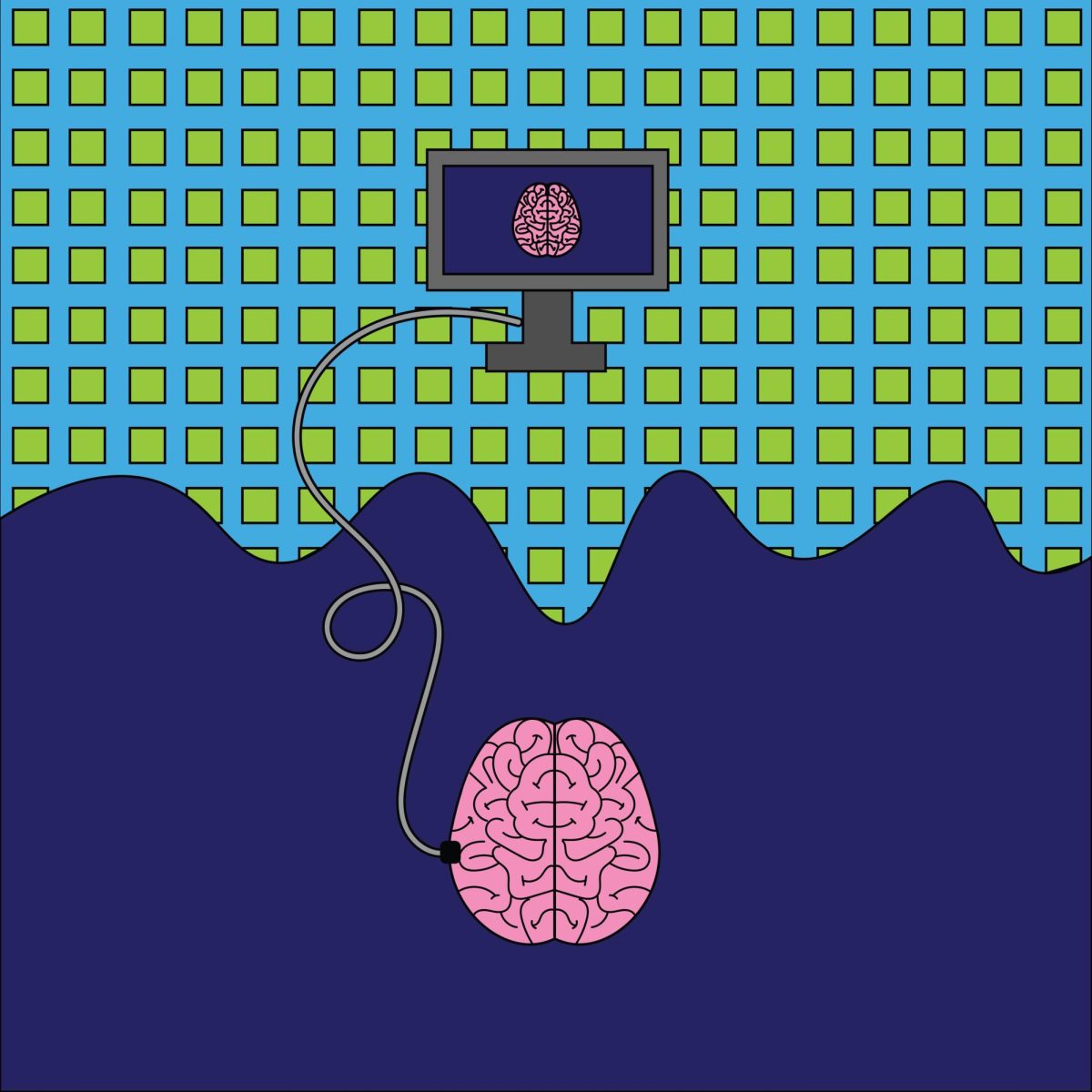Already achieving an international reputation for extensive and groundbreaking scientific research, the University of Wisconsin decided to take further strides last year by approving a multi-million dollar project to build a new research facility on University Avenue.
Slated for construction in 2008 — and expected to be completed by 2010 — the Wisconsin Institutes of Discovery will house two institutes of research: one for privately funded projects and one for publicly funded projects affiliated with the university.
And next month, a committee of 12 faculty members will decide which teams receive funding to conduct their proposed research at the facility.
The funding proposals are part of the Discovery Seed Grant — a competition beginning last June among UW scientists to have their research housed at the institutes.
The faculty committee reviewed 220 letters in all and chose 35 teams to present formal research proposals last month.
"We are looking to provide grants to faculty and to staff on campus to conduct research and projects," WID Interim Director Marsha Seltzer said. "There's just a remarkable collection of totally innovative ideas. Having said that, they're all very different, they cover a wide area of subjects."
The committee plans to announce Feb. 15 which teams will receive private funding to head start their research before construction of the institutes is completed.
While the Wisconsin Institutes for Discovery will primarily be a biomedical and medical research facility, everyone involved in the project stressed the importance of different disciplines working together on research.
"I think in the coming decades it's not just a case of digging deeper in each specialty, but in capitalizing the areas across specialties," said John Morgridge, whose name will adorn the private sector of the WID, along with his wife Taisha. The couple donated $50 million to the project — the largest donation to the university in its history.
UW spokesperson Terry Devitt said the institutes would strengthen the university's strong reputation in interdisciplinary research.
"Wisconsin has always been good with interdisciplinary research," Devitt said. "We will be working across the disciplines — it's not just the biologists, it's the nanotechnologies, statisticians, computer scientists and others."
Working together by interdisciplinary research
As intended, the formal proposals submitted by 35 research teams for the Discovery Seed Grant probe into topics across a variety of disciplines.
The proposals include research for genome mapping, detecting early disease onsets, the relationship between neurobiology and attention deficit hyperactivity disorder, and bone care science, among others.
But Seltzer stressed the institutes will focus on biomedical research through integration with the disciplines of science.
"[The institute's] goal is to make advances in biomedical research and to promote research (for) human welfare," Seltzer said. "The strategy for reaching that goal is to use biotechnology, nanotechnology and information technology to make use for these discoveries."
There are also a few grant proposals seeking funding for stem-cell research, which has stirred some controversy.
Morgridge said while it may be too early to say whether the proposals for stem-cell research will be granted, he does not oppose funding for it.
"While the stem-cell issue has been controversial, it's getting very broad support across the state, and I think increasingly so across the country," Morgridge said. "If Wisconsin wants to indeed to be a leader in that space, it's going to have to continue to invest in that research."
The Wisconsin Institutes for Discovery would, however, use only the federally approved stem-cell lines, Seltzer said.
"We can always follow the rules," Seltzer said. "That's true for the campus in general. In all the stem-cell research, we use all [approved] human embryonic stem cells."
Devitt emphasized predictions about the specific research grants cannot be made until next month.
Once the committee makes a decision, everyone involved will have a "better sense of the science involved" at both the private and public institutes, Devitt said.
And according to Gov. Jim Doyle's aid Matt Canter, those working with the project believe the collaboration between scientists in different fields in the same environment will generate new ways of approaching scientific matters.
"This public-private institution will allow new innovations to foster an interdisciplinary approach to research [and] foster commercial applications for new innovations," Canter said.
Getting everyone involved
Integral to the uniqueness of research at the Wisconsin Institutes for Discovery is the type of access that will be given to those at the university and beyond.
While the public sector will be affiliated with UW and be part of the university graduate program, even undergraduates will get a chance to learn at both the institutes, Morgridge said.
"There will be specific opportunities for those who choose to go into research," Morgridge added. "They'll be able to, even in their undergraduate years, get a sense of what that means before they actually commit to [research] both as undergraduates and graduates. It's a lot of opportunity and exposure."
And high-school students in the area may have the chance to get hands-on experience in the research area, according to Seltzer, by visiting a research lab and even working on projects.
"It's an impetus to see how we can support the K-12 mission," Seltzer said. "We want to increase science literacy."
Within the private Morgridge Institute, Devitt said the research may be more intricate than work done in the public institute.
Devitt added scientists might be able to conduct research in the Morgridge Institute that could not be done in the university sector.
"We're looking at some space for trying to move research from the basic stage to the more applied stage," Devitt said. "It's where we can take the research a few steps further."
Morgridge expressed his excitement over the proposals for the interdisciplinary research facility, which cover a "wide spectrum" of fields.
And it is the goal of the institutes to make the work available to the public, Morgridge said.
"It is the intent that the public will be, in a general sense, exposed to this," Morgridge said. "[The research is] probably more broad-based than anything done at the university so far."
Once the grants are announced, Seltzer said the teams selected will begin working on their research to "seed their ideas" in respective departments before coming together once the institutes are finished.
Seltzer said she was interested to see how the researchers will collaborate across different parts of the campus.
"Although they won't be in a building together, we've got some very interesting strategies," she said. "I have a lot of confidence that they will make strides even before the building is complete."
Making it work
Currently, the biggest challenge for those planning the construction for the Wisconsin Institutes for Discovery will be designing a facility that will meet the needs of researchers, students and the general public.
While Alan Fish, the UW associate vice chancellor for facilities, planning and management, said formal designing will begin this spring, those involved in the construction are beginning to think of how to draw up plans for accommodating such a building.
"It's different than traditional science research centers where people are cloistered and walled up," Fish said. "We're creating a different research culture. That will be a big challenge because we also have to provide for security and biological security — and we're trying to be open at the same time."
Designers have looked at similar research facilities across the nation to gather inspiration — including the James H. Clark Center at Stanford University, the Howard Hughes Medical Institute in Maryland and the Janelia Farm Research Campus in Virginia — but Fish said only a few facilities have even attempted to create a building like the Wisconsin Institutes for Discovery.
In addition, Fish said the building will represent an aesthetic and literal bridge between the traditional and urban parts of campus, standing on the 1300 block of University Avenue.
"It's going to be a major bridge between the traditional campus and the new Union South that we will begin designing later this year," Fish said. "It'll be a challenge to design something that works in the neighborhood of the traditional and provides a bridge to the contemporary."
Overall, the project itself presents challenges, but those involved are excited and ready to create a one-of-a-kind building for a university known worldwide for its research.
"Wisconsin historically has done interdisciplinary research well," Devitt said. "What is happening in other campuses around the country, [is that] they want to be like us; other universities want to get (to) that same place."
Morgridge said the combination of strong expertise research, a university that nourishes it and a government that supports it all contributed to his family's decision to make the university's largest gift to date.
Both Morgridge and his wife are UW alumni, and he added the donation was a "real delight" to repay the state for the impact it had on his family.
"It's an attractive investment," Morgridge said. "It's one of my hopes [the Wisconsin Institutes for Discovery] will act as a vehicle to attract talent, top-quality … teachers and researchers."












